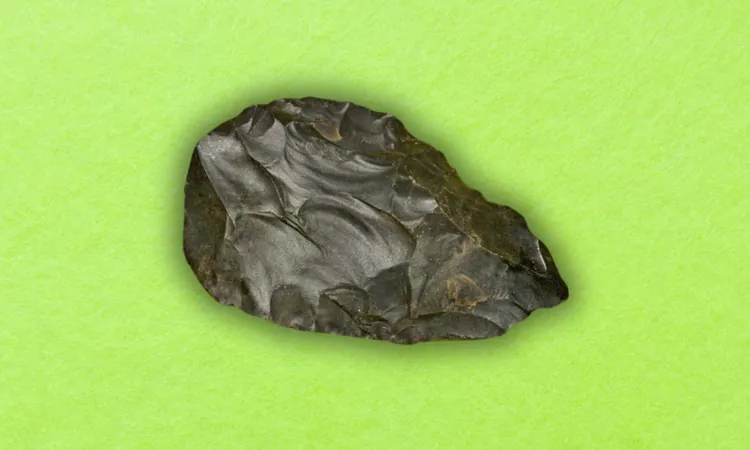
Earth’s Doomsday Threat: Asteroid Collision Risk Skyrockets to Shocking 3.1% in 2024!
2025-03-13
Author: Arjun
Unveiling the Risk Corridor of Asteroid 2024 YR4
Discovered in December 2024 by telescopes in Rio Hurtado, Chile, under the ATLAS project, asteroid 2024 YR4 is a sizeable rock roughly 177 feet wide—comparable to the Leaning Tower of Pisa. Its hazardous nature is underscored by a risk corridor that stretches across multiple continents, starting from the Pacific Ocean, traversing South America, crossing the Atlantic Ocean, and reaching Europe, Africa, the Middle East, and Asia. This vast area intersects numerous densely populated urban environments, potentially endangering over 100 million lives in cities like Bogotá, Abidjan, Lagos, Khartoum, Mumbai, and Dhaka.
The alarming potential of an impact could unleash an energy equivalent to approximately 8 megatons—over 500 times the power of the atomic bomb that devastated Hiroshima. Though the odds of an actual collision currently hover at 3.1%, there remains a reassuring 96.9% chance it will miss. This relatively low probability, however, has not deterred scientists from keeping a close watch on its trajectory, as the fallout from even a minor impact could be devastating.
The James Webb Space Telescope Takes the Stage
As asteroid 2024 YR4’s collision risk climbs, its Torino Scale rating has hit a concerning level of 3, triggering rigorous monitoring protocols. Notably, NASA's planetary defense blog highlights that 2024 YR4 is the only recognized large asteroid with over a 1% chance of impacting Earth. To enhance the reliability of these risk assessments, the James Webb Space Telescope is set to track the asteroid, delivering crucial insights into its size and path. Given that current estimates rely on reflected light—which can be misleading—this mission is of paramount importance.
Astronomers are racing against time, as the asteroid will soon fade and become challenging to observe. The data collected by the James Webb Telescope could refine risk estimates even down to 0%, helping accurately gauge the asteroid’s threat level and create effective mitigation plans.
A Strategic Two-Phase Observation Plan
The European Space Agency has implemented a two-phase observational strategy for asteroid 2024 YR4. The first phase commenced in early March, allowing astronomers to gather significant data while the asteroid was brightly visible. The second phase of observations is scheduled for May, crucial for fine-tuning the asteroid's orbital predictions, with further visibility expected in 2028.
Notably, NASA’s Center for Near-Earth Object Studies (CNEOS) has indicated that the asteroid might make a close approach to Earth on December 22, 2032, with a proximity of just 66,000 miles (106,200 kilometers). Continuous monitoring will be essential to understand its long-term risks. Meanwhile, NASA is positioning its DART (Double Asteroid Redirection Test) mission as a potential defensive strategy should the asteroid's threat increase, highlighting the necessity for ongoing vigilance and readiness against extraterrestrial dangers.
Preparing for Impact: Scenarios and Global Cooperation
To grasp the potential devastation from asteroid 2024 YR4, scientists are actively modeling various scenarios based on its characteristics. Analyzing aspects like its size, material composition, and trajectory can inform estimations of urban destruction, infrastructure damage, and environmental ramifications.
Globally, cooperation among governments and space agencies is underway to devise comprehensive planetary defense strategies. Efforts focus on developing advanced technologies for asteroid deflection, establishing communication protocols for timely public alerts, and ensuring well-coordinated response plans in case of an imminent threat. By uniting resources and expertise, the global community can enhance preparedness for any future asteroid threats.
As scientists persist in amassing data about asteroid 2024 YR4, an essential question looms: What immediate actions should be prioritized to fortify our planetary defense systems, ensuring the safety of future generations against cosmic threats?
Stay alert, stay prepared—the universe may have surprises that can change life as we know it!





 Brasil (PT)
Brasil (PT)
 Canada (EN)
Canada (EN)
 Chile (ES)
Chile (ES)
 Česko (CS)
Česko (CS)
 대한민국 (KO)
대한민국 (KO)
 España (ES)
España (ES)
 France (FR)
France (FR)
 Hong Kong (EN)
Hong Kong (EN)
 Italia (IT)
Italia (IT)
 日本 (JA)
日本 (JA)
 Magyarország (HU)
Magyarország (HU)
 Norge (NO)
Norge (NO)
 Polska (PL)
Polska (PL)
 Schweiz (DE)
Schweiz (DE)
 Singapore (EN)
Singapore (EN)
 Sverige (SV)
Sverige (SV)
 Suomi (FI)
Suomi (FI)
 Türkiye (TR)
Türkiye (TR)
 الإمارات العربية المتحدة (AR)
الإمارات العربية المتحدة (AR)